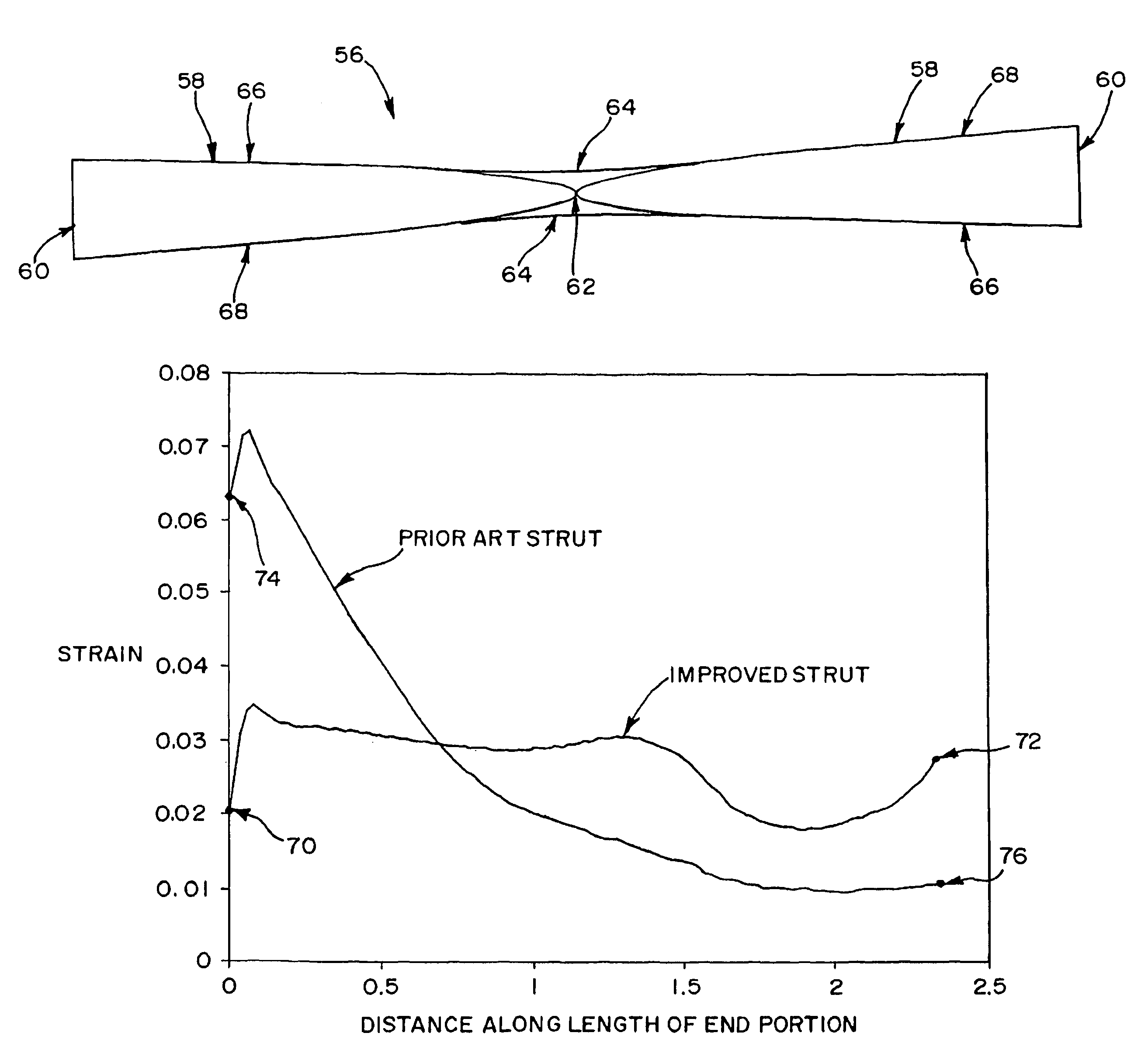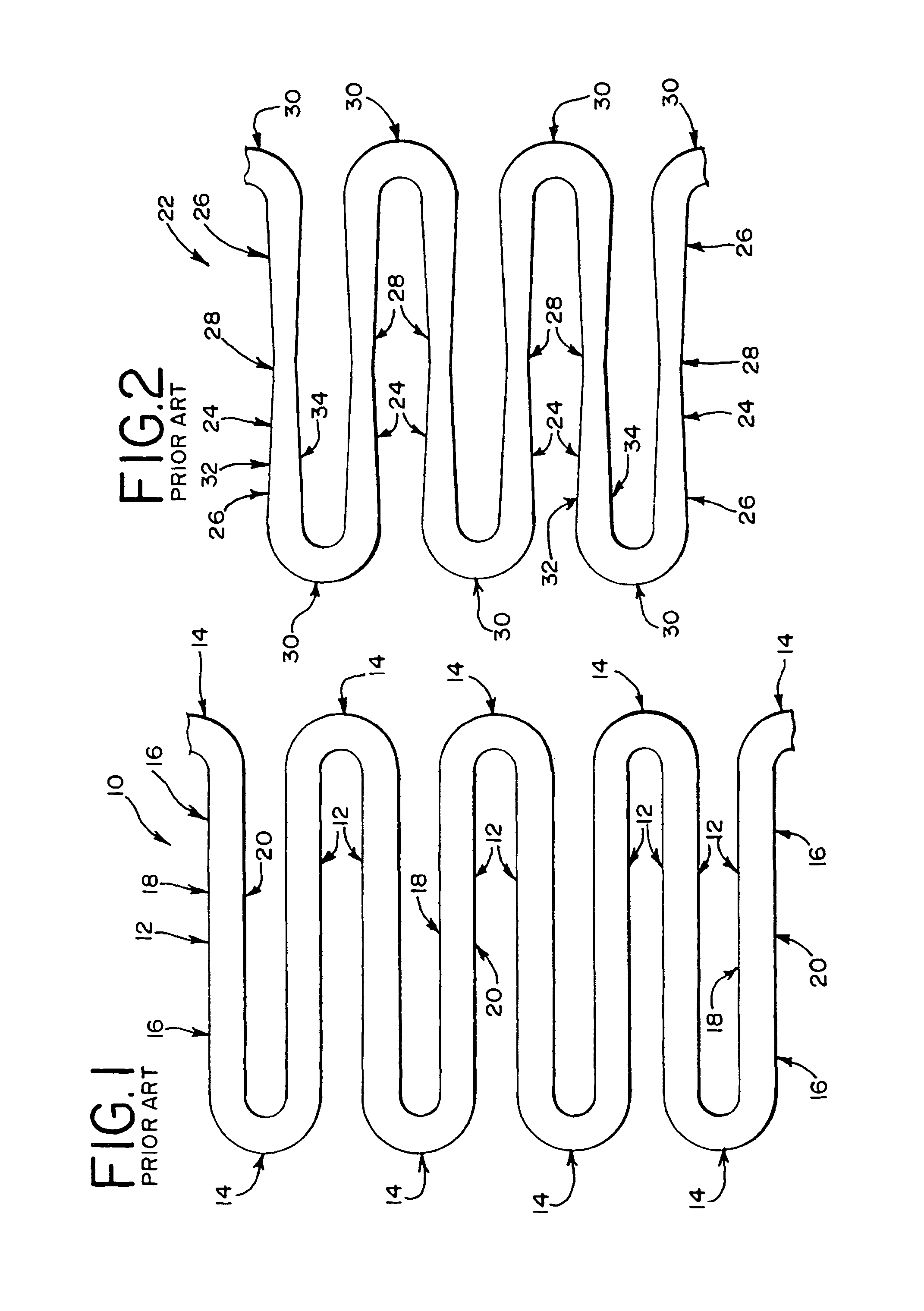Intraluminal device with improved tapered beams
a technology of tapered beams and beams, applied in the field of medical devices, can solve the problems of fatigue failure and require more robust beam designs, and achieve the effects of improving strain distribution, higher strain levels, and more robust beam designs
- Summary
- Abstract
- Description
- Claims
- Application Information
AI Technical Summary
Benefits of technology
Problems solved by technology
Method used
Image
Examples
Embodiment Construction
[0058]Referring now to the drawings, and particularly to FIG. 1, a prior art stent structure 10 is shown. As is well known in the art, a stent structure 10 typically includes a series of struts 12, or beams 12, interconnected by a series of bends 14. Many different types of materials may be used to form stent structures like the structure 10 shown in FIG. 1. For example, in the case of self-expandable stents, it is normally preferred to use an elastic material like nitinol or stainless steel. One common manufacturing technique for making a stent structure 10 is laser cutting the structure 10 from a metal cannula. However, other known methods may also be used. As shown in FIG. 1, a bend 14 is connected to each end portion 16 of the struts 12, and different struts 12 are connected to each side of the bends 14. The bends 14 on opposing ends of each strut 12 face in opposite directions. The bends 14 and struts 12 may also be further connected to other struts and bends or other structure...
PUM
 Login to View More
Login to View More Abstract
Description
Claims
Application Information
 Login to View More
Login to View More - R&D
- Intellectual Property
- Life Sciences
- Materials
- Tech Scout
- Unparalleled Data Quality
- Higher Quality Content
- 60% Fewer Hallucinations
Browse by: Latest US Patents, China's latest patents, Technical Efficacy Thesaurus, Application Domain, Technology Topic, Popular Technical Reports.
© 2025 PatSnap. All rights reserved.Legal|Privacy policy|Modern Slavery Act Transparency Statement|Sitemap|About US| Contact US: help@patsnap.com



